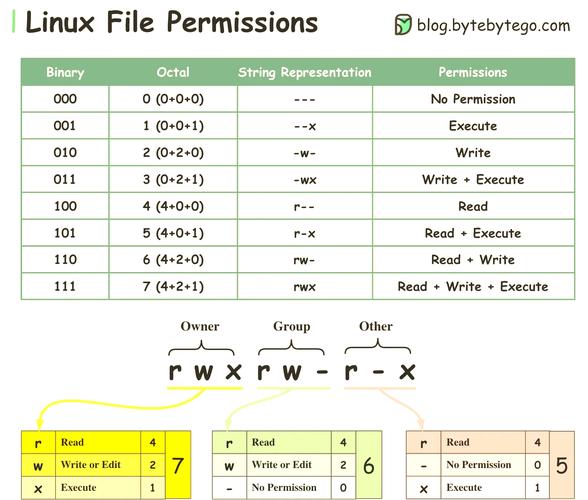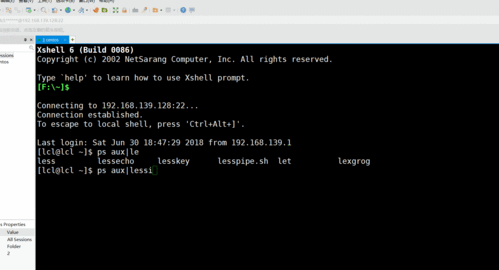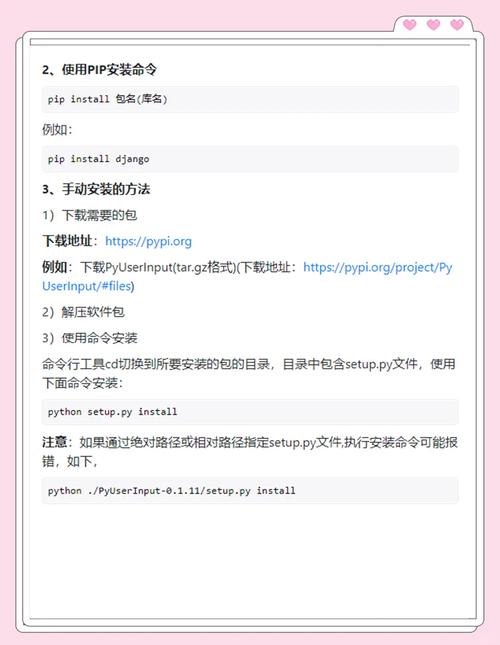Linux中的if f 命令,文件条件判断详解?if -f在Linux中怎么用?if -f到底怎么用?
在Linux系统中,Shell脚本作为一种强大的自动化工具,能够帮助系统管理员和开发者高效地完成各种重复性任务,条件判断是Shell脚本编程的核心组成部分,而if [ -f ]命令则是文件测试中最常用的条件判断之一,本文将全面剖析if [ -f ]的用法、语法结构、实际应用场景,并通过丰富的示例代码进行详细讲解,帮助读者深入掌握这一关键命令。
if [ -f ]的基本概念
什么是if [ -f ]?
if [ -f ]是Shell脚本中用于文件检测的条件判断语句,专门用来检查指定路径是否指向一个普通文件(regular file),当且仅当目标文件存在且是一个普通文件(既不是目录、符号链接,也不是设备文件等特殊文件类型)时,该条件判断才会返回真值(退出状态码为0),反之,如果文件不存在或者不是普通文件,则返回假值(非零状态码)。
语法结构详解
if [ -f "文件路径" ]; then
# 文件存在且为普通文件时执行的命令
else
# 文件不存在或不是普通文件时执行的命令
fi
[ -f "文件路径" ]:核心测试表达式,检测指定路径的文件then:条件成立时执行的代码块起始标记else(可选):条件不成立时的备用执行路径fi:if语句的结束标志
注意:方括号
[ ]实际上是test命令的另一种形式,因此括号内必须保留空格,写成[ -f file ]而非[-f file]
-f与其他文件测试操作符的对比
Shell脚本提供了丰富的文件测试操作符,下表列出了最常用的几种:
| 操作符 | 功能描述 | 典型应用场景 |
|---|---|---|
-e |
检查文件是否存在(不区分类型) | 通用文件存在性检查 |
-f |
检查是否为普通文件 | 配置文件、日志文件验证 |
-d |
检查是否为目录 | 目录操作前的验证 |
-L |
检查是否为符号链接 | 软链接处理 |
-r |
检查是否可读 | 权限验证 |
-w |
检查是否可写 | 写入前的权限检查 |
-x |
检查是否可执行 | 脚本执行前的验证 |
-s |
检查文件是否非空 | 日志文件内容检查 |
# 检查目录是否存在的示例
if [ -d "/var/log" ]; then
echo "找到系统日志目录"
fi
if [ -f ]的典型应用场景
基础文件存在性检查
#!/bin/bash
target_file="/etc/nginx/nginx.conf"
if [ -f "$target_file" ]; then
echo "Nginx配置文件存在,路径为: $target_file"
echo "文件大小: $(du -h "$target_file" | cut -f1)"
echo "最后修改时间: $(date -r "$target_file" "+%Y-%m-%d %H:%M:%S")"
else
echo "警告: Nginx配置文件不存在!" >&2
exit 1
fi
脚本安全验证
#!/bin/bash
# 重要配置文件检查
config_path="/etc/myapp/settings.cfg"
backup_path="/backup/settings.cfg"
if [ ! -f "$config_path" ]; then
echo "错误: 配置文件 $config_path 缺失!" >&2
echo "正在尝试从备份恢复..."
if [ -f "$backup_path" ]; then
cp "$backup_path" "$config_path"
chmod 600 "$config_path" # 设置适当权限
echo "配置文件已从备份恢复"
else
echo "错误: 备份文件也不存在!" >&2
exit 1 # 严重错误,终止脚本执行
fi
fi
# 配置文件存在性二次验证
if [ -f "$config_path" ]; then
echo "配置文件验证通过,开始加载..."
source "$config_path"
else
echo "配置文件恢复失败!" >&2
exit 1
fi
批量文件检查
#!/bin/bash
# 检查系统关键文件
declare -A critical_files=(
["用户账户文件"]="/etc/passwd"
["用户组文件"]="/etc/group"
["密码哈希文件"]="/etc/shadow"
["sudo权限文件"]="/etc/sudoers"
)
for desc in "${!critical_files[@]}"; do
file="${critical_files[$desc]}"
if [ -f "$file" ]; then
permissions=$(stat -c "%a" "$file")
owner=$(stat -c "%U" "$file")
size=$(du -h "$file" | cut -f1)
echo "[√] $desc ($file)"
echo " 权限: $permissions | 所有者: $owner | 大小: $size"
else
echo "[×] 严重: $desc ($file) 缺失!" >&2
fi
done
自动化备份系统
#!/bin/bash
# 日志轮转备份脚本增强版
log_file="/var/log/app/application.log"
backup_dir="/backup/logs"
max_backups=30 # 最大保留备份数
# 确保备份目录存在
[ -d "$backup_dir" ] || mkdir -p "$backup_dir"
if [ -f "$log_file" ]; then
# 生成带哈希的备份文件名
file_hash=$(md5sum "$log_file" | cut -d' ' -f1 | head -c 8)
backup_name="applog_$(date +%Y%m%d_%H%M%S)_${file_hash}.log.gz"
echo "$(date '+%Y-%m-%d %H:%M:%S') 开始备份日志文件..."
# 使用gzip压缩并保留原始文件
if gzip -c "$log_file" > "$backup_dir/$backup_name"; then
backup_size=$(du -h "$backup_dir/$backup_name" | cut -f1)
echo "备份成功: $backup_dir/$backup_name (大小: $backup_size)"
# 清理旧备份
backups_count=$(ls -1 "$backup_dir"/*.log.gz 2>/dev/null | wc -l)
if [ "$backups_count" -gt "$max_backups" ]; then
echo "清理旧备份(保留最近$max_backups个)..."
ls -t "$backup_dir"/*.log.gz | tail -n +$((max_backups+1)) | xargs rm -f
fi
else
echo "备份失败!" >&2
exit 1
fi
else
echo "日志文件不存在,跳过备份。"
fi
高级技巧与最佳实践
使用test命令的等价写法
# 三种等效的写法比较
file="/path/to/file"
# 写法1:使用test命令
if test -f "$file"; then
echo "写法1:使用test命令检测文件"
fi
# 写法2:使用[ ]语法
if [ -f "$file" ]; then
echo "写法2:使用[ ]语法检测文件"
fi
# 写法3:使用[[ ]]语法(Bash扩展)
if [[ -f "$file" ]]; then
echo "写法3:使用[[ ]]语法检测文件"
fi
处理含特殊字符的文件名
# 复杂文件名处理最佳实践
problematic_file="My Document with Spaces & Special (Characters).txt"
# 创建测试文件
touch "$problematic_file"
# 最佳实践1:始终使用双引号包裹变量
if [ -f "$problematic_file" ]; then
echo "成功检测到文件: $problematic_file"
fi
# 最佳实践2:使用数组处理多个含特殊字符的文件
files=("File One.txt" "File Two.log" "Config File.cfg")
for file in "${files[@]}"; do
if [ ! -f "$file" ]; then
echo "警告: 文件 $file 不存在" >&2
fi
done
# 清理测试文件
rm "$problematic_file"
条件组合技巧
# 高级条件组合示例
log_file="/var/log/app.log"
config_file="/etc/app.conf"
backup_dir="/backup"
# 组合多个条件
if [ -f "$log_file" ] && [ -r "$log_file" ] && [ -s "$log_file" ]; then
echo "日志文件存在、可读且非空"
fi
# 使用-o表示OR逻辑
if [ ! -f "$config_file" -o ! -r "$config_file" ]; then
echo "配置问题: 文件不存在或不可读" >&2
fi
# 复杂条件判断
if [ -d "$backup_dir" ] && [ -w "$backup_dir" ]; then
if [ -f "$log_file" ]; then
if [ -s "$log_file" ]; then
echo "准备备份非空日志文件..."
# 备份操作
else
echo "日志文件为空,跳过备份"
fi
else
echo "日志文件不存在" >&2
fi
else
echo "备份目录不可用" >&2
fi
# 单行条件执行技巧
[ -f "$config_file" ] && source "$config_file" || { echo "无法加载配置"; exit 1; }
常见问题排查指南
语法错误:[: missing ]
# 常见错误模式及修正
file="/path/to/file"
# 错误1:缺少右括号
if [ -f "$file" # 语法错误
then
echo "示例"
fi
# 错误2:括号内缺少空格
if [-f "$file"]; then # 语法错误
echo "示例"
fi
# 正确写法
if [ -f "$file" ]; then
echo "正确的条件判断语法"
fi
文件路径问题
# 路径处理最佳实践
relative_path="../config/settings.cfg"
user_input_path="~/documents/file.txt" # 注意~不会被自动展开
# 问题1:相对路径的不确定性
if [ -f "$relative_path" ]; then
echo "找到相对路径文件"
fi
# 解决方案1:转换为绝对路径
full_path=$(realpath "$relative_path" 2>/dev/null || echo "")
if [ -n "$full_path" ] && [ -f "$full_path" ]; then
echo "使用绝对路径找到文件: $full_path"
fi
# 问题2:用户输入的路径包含~
if [ -f "$user_input_path" ]; then
echo "这不会按预期工作"
fi
# 解决方案2:展开用户路径
expanded_path="${user_input_path/#\~/$HOME}"
if [ -f "$expanded_path" ]; then
echo "正确处理用户路径: $expanded_path"
fi
调试技巧
#!/bin/bash
# 高级调试技巧示例
# 方法1:使用set -x开启调试
set -x
sample_file="/tmp/debug_test.file"
touch "$sample_file"
[ -f "$sample_file" ] && echo "文件存在"
set +x
# 方法2:使用trap调试
debug() {
echo "调试信息: $BASH_COMMAND"
}
trap debug DEBUG
# 被跟踪的命令
temp_file="/tmp/temp.$$"
if [ -f "$temp_file" ]; then
rm "$temp_file"
fi
# 关闭跟踪
trap - DEBUG
# 方法3:使用PS4定制调试输出
PS4='+ ${BASH_SOURCE}:${LINENO}: ${FUNCNAME[0]:+${FUNCNAME[0]}(): '
set -x
[ -f "/nonexistent" ] || echo "文件不存在"
set +x
性能优化建议
- 减少文件系统访问:多次检查同一文件时,考虑将结果存入变量
# 优化前:多次访问文件系统
if [ -f "$large_file" ]; then
if [ -s "$large_file" ]; then
if [ -r "$large_file" ]; then
# 处理文件
fi
fi
fi
# 优化后:单次检查
if [ -f "$large_file" ] && [ -s "$large_file" ] && [ -r "$large_file" ]; then
file_status="valid"
# 后续使用$file_status变量
fi
- 使用
[[ ]]代替[ ]:Bash中[[ ]]更强大且不易出错
# [ ]的局限性
file="name with spaces.txt"
touch "$file"
if [ -f $file ]; then # 这会出错,因为未加引号
echo "示例"
fi
# [[ ]]更安全
if [[ -f $file ]]; then # 即使不加引号也能正确处理
echo "[[ ]]语法更健壮"
fi
# [[ ]]支持更多操作符
pattern="*.log"
if [[ "file.log" == $pattern ]]; then
echo "模式匹配成功"
fi
- 并行检查大量文件:
#!/bin/bash
# 并行文件检查脚本
check_file() {
local file=$1
if [[ -f "$file" ]]; then
echo "$file exists"
# 其他检查操作...
else
echo "$file missing" >&2
fi
}
# 导出函数以便并行使用
export -f check_file
# 生成测试文件列表
file_list=()
for i in {1..1000}; do
file_list+=("/tmp/testfile_$i")
done
# 创建部分测试文件
for i in {1..500}; do
touch "/tmp/testfile_$i"
done
# 串行检查(对比基准)
echo "串行检查开始: $(date)"
for file in "${file_list[@]}"; do
check_file "$file"
done
echo "串行检查结束: $(date)"
# 并行检查(使用GNU parallel)
echo "并行检查开始: $(date)"
parallel -j 8 check_file ::: "${file_list[@]}"
echo "并行检查结束: $(date)"
if [ -f ]作为Shell脚本中最基础也最重要的文件测试命令,其应用范围涵盖了系统管理、自动化运维、CI/CD流程等众多领域,通过本文的系统学习,读者应该已经掌握:
- 精确理解
-f测试符与其他文件测试操作符的区别及适用场景 - 熟练运用各种条件组合技巧,包括逻辑与/或、嵌套判断等高级用法
- 能够处理复杂的文件检测场景,包括特殊字符文件名、相对/绝对路径转换等
- 具备排查常见问题的能力,如语法错误、权限问题、路径解析等
- 掌握性能优化方法,减少不必要的文件系统访问,使用现代Shell特性
建议读者在实际工作中多练习这些技巧,特别是结合find、stat、realpath等命令进行更复杂的文件操作,Shell脚本能力的提升很大程度上依赖于实践经验,只有通过不断的实践才能真正掌握这些看似简单却功能强大的命令。
扩展学习资源
- Bash参考手册 - 条件表达式 - GNU官方文档
- Linux文件系统层次结构标准 - 理解标准文件位置
- 高级Bash脚本编程指南 - 全面深入的Shell编程教程
- ShellCheck - Shell脚本静态分析工具,帮助发现潜在问题
- Google Shell风格指南 - 行业最佳实践参考
通过持续学习和实践,您将能够编写出更加健壮、高效的Shell脚本,大幅提升Linux系统管理效率,优秀的脚本不仅需要正确性,还应具备良好的可读性、可维护性和适当的错误处理机制。











